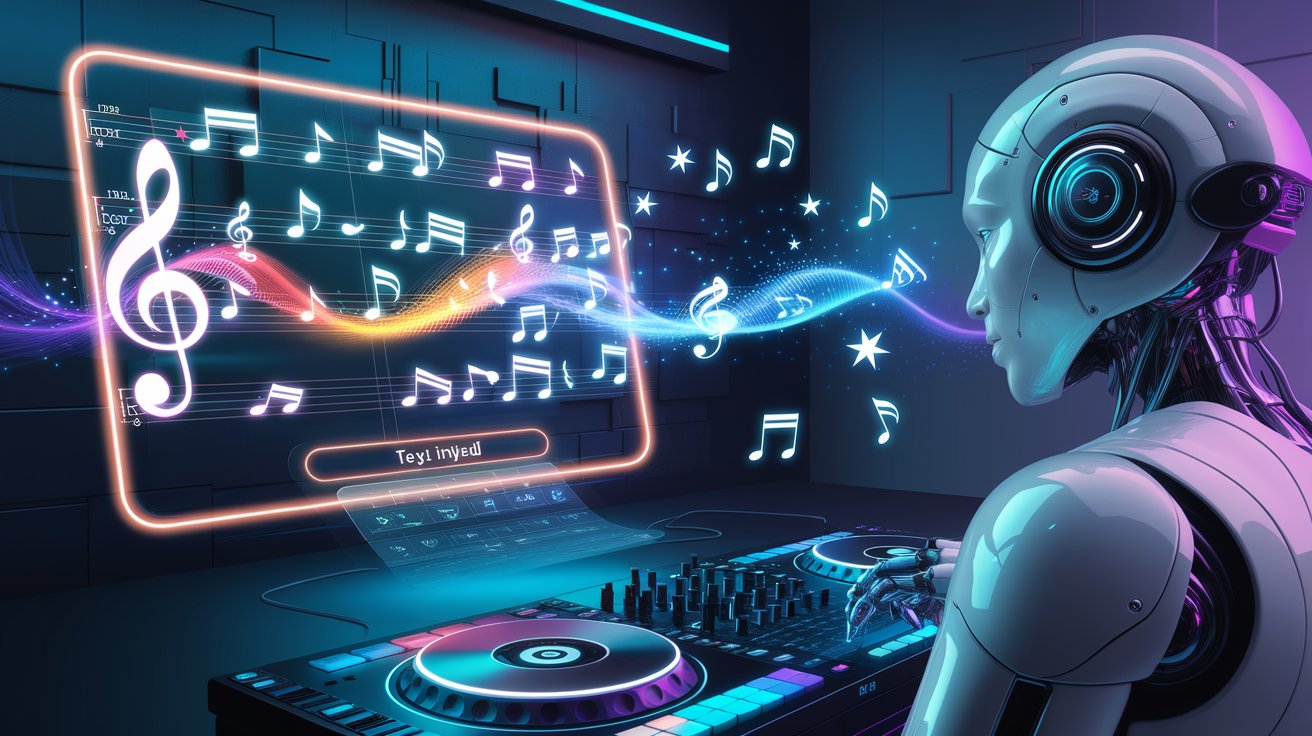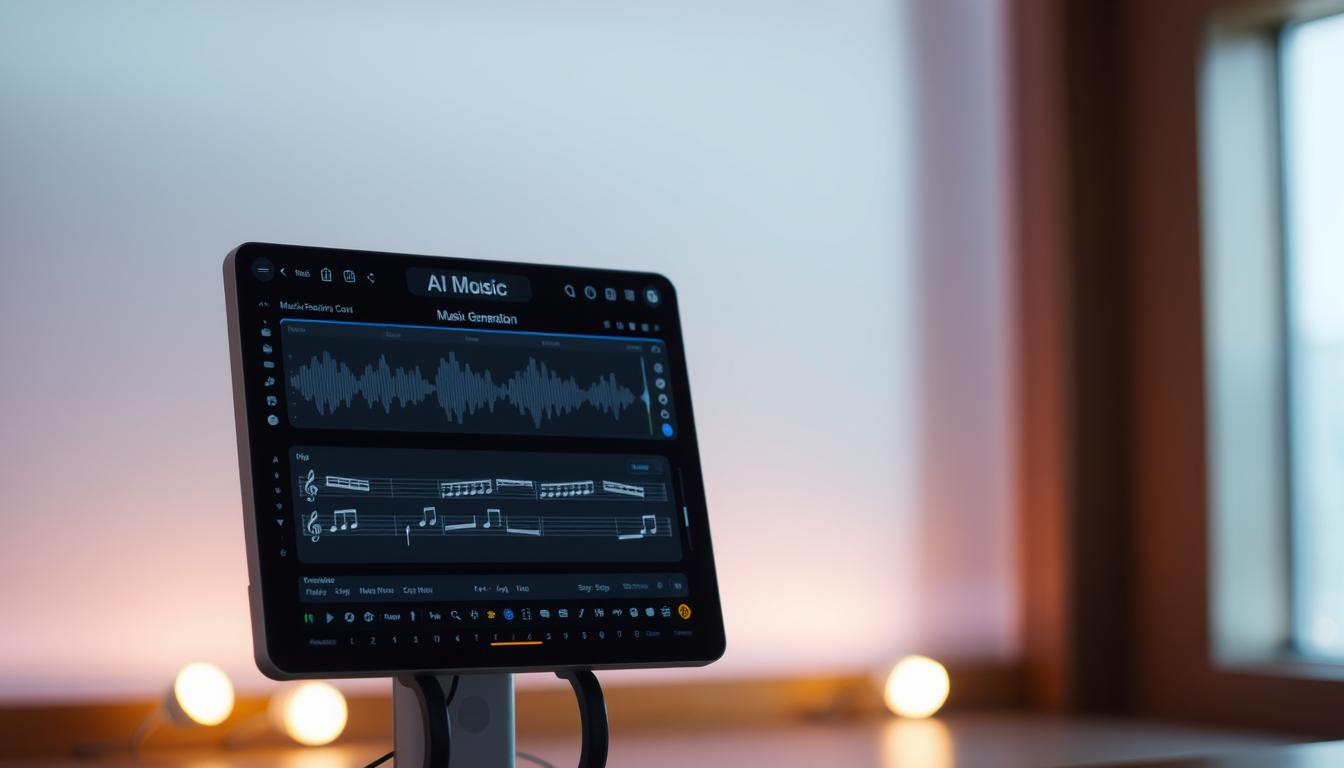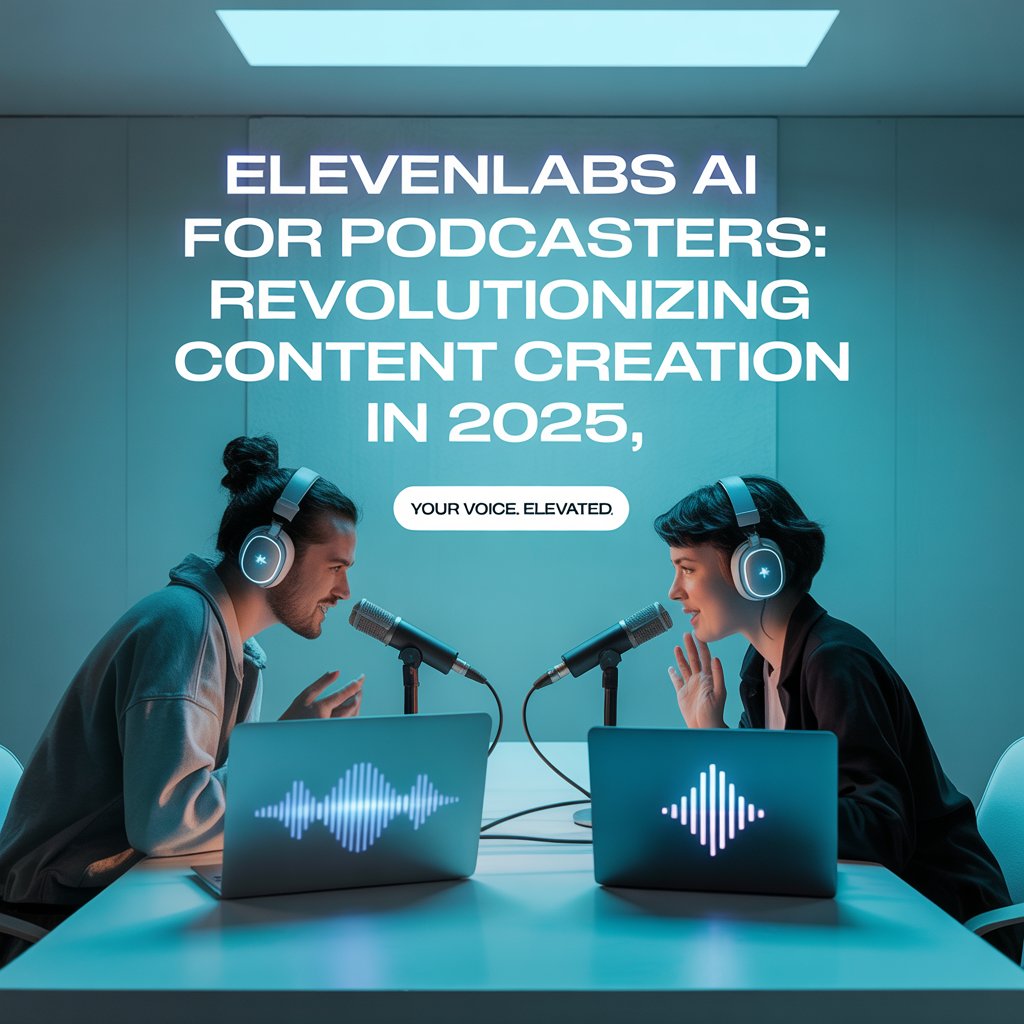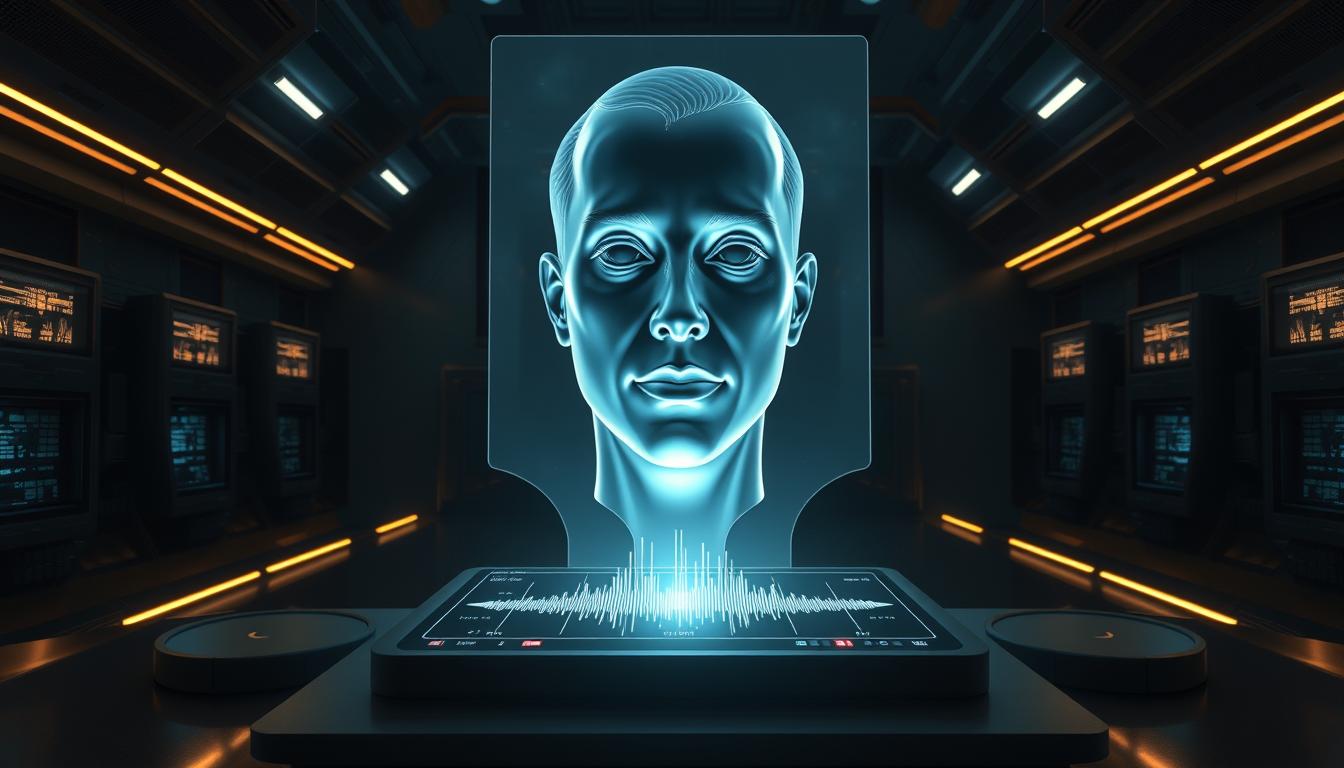Imagine typing “sunlit beach day” into a box and hearing waves crash in your headphones within seconds. That’s how I felt the first time I used a text to song generator. No sheet music, no instruments—I just described a feeling, and AI turned my words into a melody.
For years, I’d dreamed of making music but froze at the complexity. Now, tools like TopMediai and Veed.io let anyone turn ideas into songs in seconds. No expertise needed, no frustration.
What if your morning coffee inspiration could become a full track by lunch? These platforms don’t just make music—they democratize creativity. With Voicemod’s voice modulation and Veed.io’s five genre options, I’ve built jingles for social media, background scores for videos, even a birthday song my niece sings.
The magic? A free trial clicks into a demo, then a full song flows out. No coding, no stress.
Key Takeaways
- Text to song generators like TopMediai and Veed.io create professional tracks in seconds using AI.
- Free trials let users test features like genre selection (chill, hip-hop, rock) and royalty-free downloads.
- No prior skills needed—input phrases like “mysterious forest” to generate ambient melodies instantly.
- Customize vocals, tempo, and style with tools such as VoiceMod’s 32 video templates and MIDI exports.
- Commercial licenses let creators use songs in ads, films, or games without copyright risks.
Introduction
My adventure with ai music composition started by chance one night. I was looking for something creative to do. I found a tool that turned my poem into music in seconds. It was like magic—my words became sounds and melodies.
This sparked my interest in how ai music composition connects human creativity with technology.
My First Encounter with Music Generation
I tried WriteCream’s AI Music Generator first. I uploaded a story about a stormy sea. It turned my text into a beautiful piano piece with strings.
It let me pick the music style and adjust the tempo and mood. Seeing my words become music was amazing.
| Feature | Description |
|---|---|
| Text-to-Music Conversion | Generates melodies from inputted text in seconds |
| Genre Options | Choose from classical, pop, jazz, or ambient styles |
| Customization | Adjust pitch, tempo, and mood sliders for unique outputs |
Why This Journey Matters to Me
As someone who loves music but isn’t trained, ai music composition has been a game-changer. It’s not just about making songs. It’s about making art accessible to everyone.
The tool’s easy interface lets anyone play with music without needing years of study. Every project I’ve done, from a birthday theme to a film score, shows how tech can boost human creativity.
What is a Text to Song Generator?
Imagine typing a sentence and hearing it turn into a full melody. That’s what a text to song generator does! These tools use automatic music creation powered by AI to turn words into songs. They analyze your text’s emotion, rhythm, and keywords to create music.
They use natural language processing (NLP) and deep learning for this. Generative adversarial networks (GANs) then refine the output. They mix your lyrics with instruments and set the tempo.
Here’s how it works: you input a prompt, like “upbeat pop track with tropical vibes.” The AI picks the right instruments, sets the beat, and mixes everything together. Let’s look at how some top tools compare:
| Tool | Key Features |
|---|---|
| Media.io | Generates WAV files, supports 15+ genres, royalty-free |
| Veed.io | Five preset styles (Chill, Rock, etc.), instant previews |
| Voicemod | Adds vocals to text, 32 video templates with Wav2Lip tech |
I’ve tried these tools to see how they work. For example, typing “mysterious thriller soundtrack” into Media.io gave me a haunting piano melody with cello. The interface lets me adjust tempo and instruments, and even export sheet music.
AI can’t fully match human creativity, but it’s great for quick ideas or inspiration. These tools are perfect for content creators, filmmakers, or anyone wanting to try music without formal training.
My Journey into AI Music Composition
Exploring songwriting ai tools like AIMusicGen.ai changed how I make music. At first, it felt overwhelming, but soon I found it easy to turn ideas into songs. I loved adjusting genres, moods, and even vocal genders without worry.
- Customizing lyrics with existing melodies using vocal-melody separation tech
- Instant feedback loops—listening to drafts while they generate
- Creating 4-minute tracks in Spanish, Mandarin, or English effortlessly
“The best part? I can now prototype entire albums in hours instead of weeks.”
Seeing my first full song auto-generate was amazing. Features like commercial usage rights and cloud storage made me feel ready to share. Even small changes, like choosing piano or synth, show how songwriting ai makes professional tools accessible. This tech is more than a tool; it’s a partner that pushes my creativity every day.
Exploring Automatic Music Creation Techniques
I’ve spent hours playing with the text-into-song tool to see how it works. When I say “stormy night with a blues feel,” it creates a richer melody. Suno’s AI uses words to make music by looking at mood, tempo, and instruments.
- Pairing adjectives with genre tags (e.g., “vibrant electronic pop”)
- Testing mood descriptors like “melancholic” or “energetic”
- Using comma-separated style keywords for layered effects
The tool uses NVIDIA NeMo Parakeet ASR engine to follow your creative ideas. ChatGPT writes lyrics that match the music. For example, “sunny beach sunset” made a chill indie track with guitars and ocean sounds.
Suno has a wide range of music styles like pop, rock, and hip-hop. Each style reacts differently to what you type. Even free users can try it out and see how it works.
By mixing simple commands with emotional words, you get the best results. The text-into-song tool makes music fast, whether it’s for a party or a sad song.
Mastering the text to song generator: A Personal Guide
Exploring lyric to music converter tools was a game-changer for me. I found it amazing how text could turn into songs so easily. Tools like Kits.ai and Mubert’s generator made music-making simple. Each tool, from ACE Studio’s vocalists to Splash Pro’s languages, brought something special to the table. Here’s how I made the most of these tools.
How I Discovered the Potential
I started by trying different tools. Udio was easy to use but slow at times. Suno’s songs were strong at first but then dropped off. MusicStar.AI and Beatoven.ai’s free versions let me test before paying.
Finding the right tool for my project was key. It was all about matching the tool’s strengths to my needs.
Step-by-Step Exploration of the Tool
- Define your vision: Pick the mood and genre you like.
- Input your lyrics or text prompt into the lyric to music converter interface.
- Adjust settings: Try different tempos, instruments, and voices (like ElevenLabs’ 1,000+ voices).
- Preview and refine: Keep tweaking until it sounds just right. Use ACE Studio’s tools for the final polish.
| Tool | Pros | Cons |
|---|---|---|
| Udio | User-friendly design, smooth generation | Longer wait times, occasional audio glitches |
| Suno | Quick starts, easy to begin | Poor endings, quality drops over time |
This table highlights Udio’s reliability for complex projects. For beginners, starting with free tiers like Beatoven.ai’s trial is wise. The best results come from using tool features and your creativity together.
Unleashing Creativity with Songwriting AI
Discovering the auto composer felt like unlocking a secret studio in my mind. Instead of staring at a blank page, I type simple ideas. The AI transforms them into melodies I never imagined. It’s like having a co-writer that never sleeps.

Here’s how it works: pick a genre—pop, rock, or even gospel—then answer quick prompts about your theme. The AI builds lyrics that flow naturally, suggesting rhymes and rhythms I’d miss on my own. For instance, typing “lonely sunset” once led to a ballad filled with vivid imagery. Users like me love how it breaks through creative blocks. As one fan shared:
“This tool turned my rough ideas into full verses. It’s like having a collaborator!”
| Feature | Why It Works |
|---|---|
| Genre Selection | Matches mood to music instantly |
| Keyword Guidance | Steers lyrics without limiting freedom |
| Free Trials | Experiment without commitment |
With the auto composer, creativity isn’t just for pros. It turns sparks of inspiration into songs, no sheet music required. Whether refining a hook or starting fresh, this tool keeps the creative process flowing.
Navigating the World of Digital Music Generator
Exploring digital music generators opens a universe of creative possibilities. My journey taught me to prioritize tools that blend innovation with user-friendliness. Here’s how I’ve found the best options stand out.
My Favorite Features
- Instrument variety: Tools like Hydra II and Suno.ai offer hundreds of instruments, letting me mix electric guitars with orchestral strings effortlessly.
- AI-driven vocals: AIVA’s ability to match AI singers to my lyrics saves hours of trial and error.
- Genre flexibility: Platforms like Mubert adapt to any style, from lo-fi beats to cinematic scores with a single click.
These tools also simplify collaboration. Udio AI’s real-time editing and Soundraw’s DAW compatibility make teamwork seamless. Legal clarity matters too—Hydra II ensures tracks are royalty-free for commercial use.
| Tool | Key Feature |
|---|---|
| Hydra II | On-demand music, commercial licensing |
| AIVA | Classical/orchestral compositions, AI composer training |
| Mubert | Real-time mood/genre adjustments, royalty-free tracks |
| Suno.ai | Text-to song in minutes, 20+ genres |
| Soundraw | Customizable tracks for ads and games |
Choosing the right digital music generator depends on your project. For example, Boomy’s drag-and-drop interface suits beginners, while Soundful’s pre-mastered templates save post-production time. Each tool has its strengths—experimenting helps find what fits your style best.
Enhancing My Tunes with Lyric to Music Converter
Using a lyric to music converter changed how I mix words and music. It makes sure my lyrics influence every part of the song. This includes the speed and the type of instrument used.
When I enter my lyrics, the AI picks the right mood. For example, sad lyrics get soft piano sounds. Happy lines get lively beats.
- Aligns mood and style with your lyrics
- Customizes genres, tempos, and instruments
- Adds vocals or instrumental tracks as needed
Let’s look at some examples:
| Use Case | Benefit |
|---|---|
| Writing a breakup song | Automatic sad piano melodies and minor keys |
| Celebration anthem | Upbeat drums and major chords |
This converter saved me so much time. Now, my songs sound more real. It works great for pop songs or indie ballads. It’s a big help in finding the right music for your lyrics.
Tips and Tricks for Effective Auto Composer Use
Mastering an auto composer is more than just hitting “generate.” It’s about perfecting every step. Here are the key tips that make a big difference.
Optimizing Your Settings
Begin by adjusting the tool’s settings to fit your needs. For instance, Udio allows you to add custom lyrics and remix tracks. So, I start by tweaking the genre presets.
With Suno AI, being specific in your prompts leads to more unique results. Stable Audio’s library of pre-made prompts helps you refine moods like “dark synthwave” or “upbeat pop.”
- Try out tempo and mood sliders to align with your vision.
- For vocals, Riffusion’s free tier can generate full tracks. But, detailed prompts like “jazz trumpet + 1920s vibe” give better results.

Personal Best Practices
My number one rule is to start simple. Botnik’s predictive text can help with lyrics, while SongStarter offers instant chord ideas. Always test small changes, like adjusting the “reverb level,” to see big differences.
Pairing AUDOIR with Moises for rhymes can save time. And remember, RipX can clean up vocals in your final mixes.
Pro tip: Use These Lyrics Do Not Exist to come up with ideas, then import them into your main tool. Mixing Amadeus Code’s chord progressions with DeepBeat’s rap lines can create unique tracks.
Think of every auto composer as a canvas. Experiment with settings, mix tools, and let your creativity lead. The right adjustments can turn good ideas into amazing songs.
The Future of Music: From Text into Song Tool to Complete Compositions
Looking ahead, I see text-to-song AI evolving into platforms where creativity knows no limits. Tools like Boomy and Aivaalready let me turn ideas into full tracks. But the next wave will go even further.
Imagine systems that combine sentiment analysis with VR environments to craft immersive soundscapes. This will take music to new heights.
- Real-time collaboration tools blending AI and human input
- Customizable timbres using Google Magenta’s timbre transfer tech
- AI-driven orchestration for complex classical arrangements
Platforms like OpenAI’s MuseNet have shown how AI can merge genres. For example, transforming a Chopin piece into rock seamlessly. Future systems might even predict listener emotions to adjust compositions live.
The Soundtrap AI Music Tutor already teaches composition. But upcoming tools could democratize music education entirely. This means more people can make music without technical barriers.
As someone who started with basic melody generators, I’m excited about ethical frameworks. These advancements won’t replace artists—they’ll empower creators to explore new sounds. The line between human and machine creativity is blurring.
But the end result? A world where anyone can craft professional-grade music without technical barriers.
Conclusion
My journey with text to song generators and AI music tools like TopMediai has opened my eyes. These platforms make it easy for anyone to turn ideas into music. With tools like TopMediai’s AI, creating professional-quality tracks is now accessible to everyone.
Features like instant lyric-to-music conversion and customizable vocals make it simple. I’ve used TopMediai to create songs in styles from Taylor Swift to K-pop. Adjusting pitch and tempo, I’ve made each track perfect.
The three-step process—input details, generate, refine—makes song creation easy. It allows for personal and polished songs. These tools are free to try, with no login needed. They empower creators to explore their musical talents.
Songwriting AI and digital music generators can help you turn stories into songs. Don’t wait to start your musical journey. See where AI music composition can take you today.
FAQ
What is a text to song generator?
A text to song generator is a cool AI tool. It turns written text into music. It creates melodies, harmonies, and rhythms based on what you write.
Do I need any musical expertise to use these tools?
No, you don’t need to know music. These tools are easy to use. Anyone can make music with them, no matter their background.
What technologies power text to song generators?
These tools use advanced tech. Like generative adversarial networks (GANs) and natural language processing (NLP). They help understand and create music from text.
Can I use the music created by these tools commercially?
Yes! You can use the music for any project. Most tools let you use the music without worrying about legal issues.
Are there any free trials available for these tools?
Yes, many offer free trials. This lets you try them out before you buy a subscription.
How can I optimize the text I input for better musical outcomes?
Write clear, detailed text. This helps the AI create music that fits your mood or style. Be specific about what you want.
What are some features to look for in a digital music generator?
Look for things like different instruments and AI voices. Also, easy navigation and customization options are key. They help you be creative.
How do lyric to music converters work?
These tools mix lyrics into the music-making process. This way, the music captures the emotional depth of the lyrics.
What tips do you have for using auto composers effectively?
Try different settings and prompts. Adjust your inputs for different music styles. Don’t be afraid to experiment to get the best sound.
What is the future of music generation technology?
The future looks bright. We’ll see more advanced tools that make music creation easier for everyone. This will change how we make music.






One thought on “Best Text to Song Generator In 1 Click.”